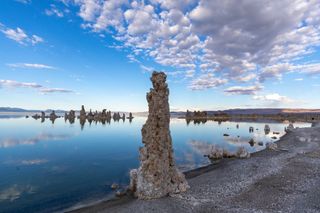Geochimica et Cosmochimica Acta
Volume 260, 1 September 2019, Pages 124-132
Alkaline lake settings for concentrated prebiotic cyanide and the origin of life
J.D.Toner, D.C.Catling
University of Washington, Box 351310, Dept. Earth & Space Sciences, Seattle, WA 98195, USA
Received 4 April 2019, Accepted 18 June 2019, Available online 25 June 2019.
Associate editor: Nicholas Tosca
https://doi.org/10.1016/j.gca.2019.06.031
Under a Creative Commons license

Source/Fonte: (Image: © Matthew Dillon/Flickr/CC BY 2.0
Abstract
Cyanide plays a critical role in origin of life hypotheses that have received strong experimental support from cyanide-driven synthesis of amino acids, nucleotides, and lipid precursors. However, relatively high cyanide concentrations are needed. Such cyanide could have been supplied by reaction networks in which hydrogen cyanide in early Earth’s atmosphere reacted with iron to form ferrocyanide salts, followed by thermal decomposition of ferrocyanide salts to cyanide. Using an aqueous model supported by new experimental data, we show that sodium ferrocyanide salts precipitate in closed-basin, alkaline lakes over a wide range of plausible early Earth conditions. Such lakes were likely common on the early Earth because of chemical weathering of mafic or ultramafic rocks and evaporative concentration. Subsequent thermal decomposition of sedimentary sodium ferrocyanide yields sodium cyanide (NaCN), which dissolves in water to form NaCN-rich solutions. Thus, geochemical considerations newly identify a particular geological setting and NaCN feedstock nucleophile for prebiotic chemistry.
FREE PDF GRATIS: Geochimica et Cosmochimica Acta
Keywords
Prebiotic chemistryearly EarthOrigin of lifeCyanideAlkaline lakes
FREE PDF GRATIS: Geochimica et Cosmochimica Acta


